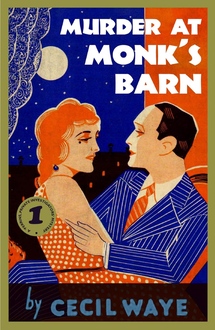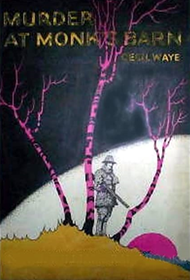
Gilbert Wynter, a senior partner of an electrical engineering firm, is shot through the curtained window of his Monk’s Barn residence. His younger brother Austin, who is now the chief suspect, visits the Perrins Invesigators office and requests their help in clearing his name. The assignment becomes especially personal for Vivienne Perrin, who quickly falls in love with her client. The murder is a baffling one, however, as the shot (and the retrieved gun) originated from within the walled and gated gardens of the home, yet no visitors could have entered or exited without being noticed. Motive is also unknown; the only person with one appears to be Austin, who had just quarreled with his brother about the direction of the company. With Gilbert out of the way, Austin is one step closer to complete ownership of the firm.
But the dead man’s wife inherits Gilbert’s share of the holdings, and Anne Wynter appears to be just as obstinate as her husband had been about expanding the company. When a poisoned box of chocolates arrives in roundabout fashion as a gift at Monk’s Barn and a gossipy neighbor named Mrs. Cartwright becomes the next fatality, Superintendent Swayne cannot ignore the mounting evidence against Austin Wynter and makes an arrest. It is Vivienne, with Christopher following a step behind, who must race against the clock to find a solution that will clear the name of her inamorato.
The presence of a romantic narrative in detective fiction has long been a source of contention for some readers. Others, like myself, have no real problem with the “human element” seeping into a whodunit as long as it doesn’t threaten to overtake the story and shift its genre status. Street, writing as Waye, strikes a pleasing balance here, in my opinion. As he will be known for his exercises in clinical detail through the dozens of John Rhode mysteries featuring the science-minded Dr. Lancelot Priestley, it is enjoyable to see how the “humdrum” author approaches a romantic motif; I think he acquits himself admirably, and of course Vivienne’s feelings for the accused man raises the stakes for the character and (ostensibly) for the reader.

If I have one (minor) complaint, it is connected with the introduction of that fateful box of chocolates. The prop is introduced and handled in such an obvious way that it might just as well have a flashing neon skull and crossbones atop it. I primarily bristled at its unnatural absorption into the story, which could have been more subtly deployed to much greater effect. As written, the reader watches as Austin offers to buy Vivienne a box of local chocolates, Vivienne explains that she never eats chocolate, Austin sends a box to her anyway, Vivienne decides to gift them to Mrs. Cartwright, who explains repeatedly that she will bring them to Mrs. Wynter, who will eat the square chocolates while she, Mrs. Cartwright, will eat the round ones... By the time the poison finally makes its entrance, it feels like we have been immersed in the Chocolate Saga Set-Up for pages upon pages, which we have.
 RSS Feed
RSS Feed